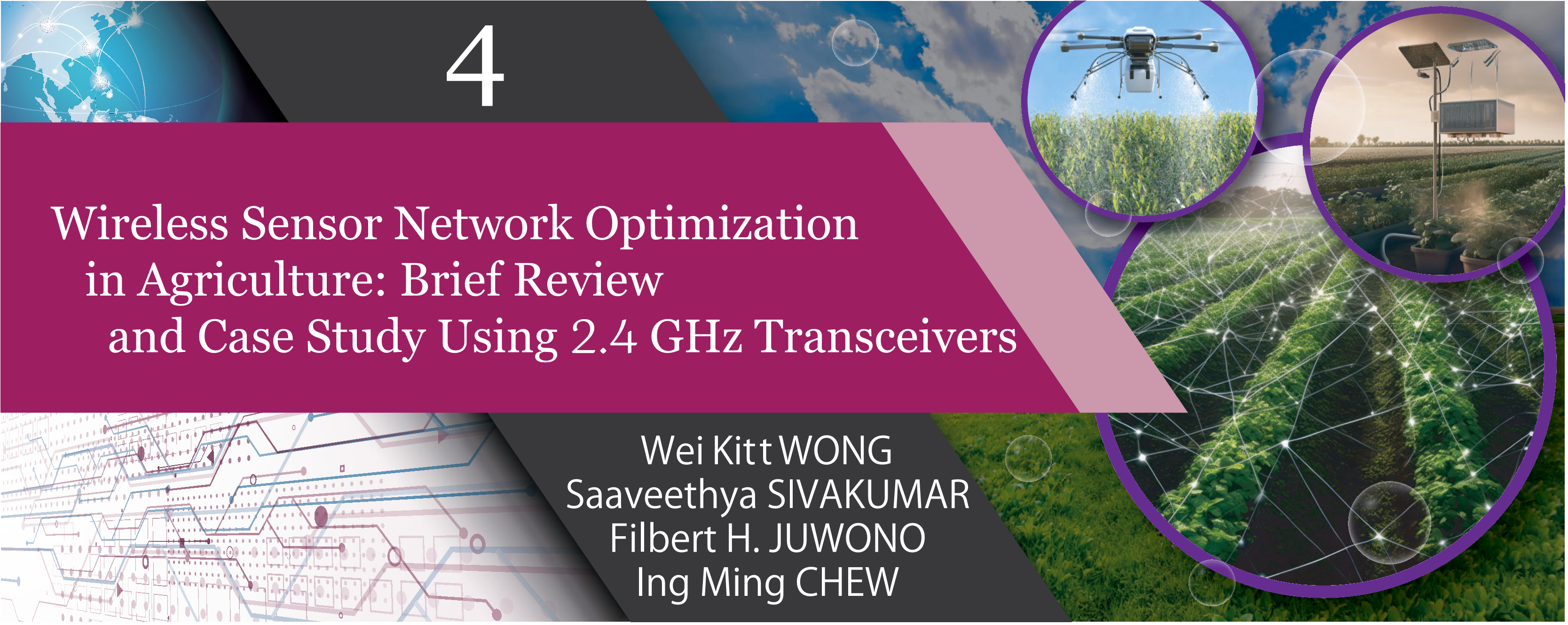
|
電子情報通信学会 - IEICE会誌 試し読みサイト
© Copyright IEICE. All rights reserved.
|

|
電子情報通信学会 - IEICE会誌 試し読みサイト
© Copyright IEICE. All rights reserved.
|

Abstract
Internet of things (IoT) has been widely applied in various sectors, including in agricultural sector for crop monitoring. To cover a wide area, the deployment of a wireless sensor network (WSN) is required to transmit data to a single access point. The sensors, however, have a few constraints, including energy consumption and service coverage (range). As a result, it is critical to optimize the configuration of the sensors to obtain the desired performance. With this in mind, the objective of this paper is threefold. First, the state-of-the-art of the WSN-IoT in agricultural sector is presented. subsequently, some of the optimization techniques corresponding to the WSN are discussed along with some areas that need to be considered in the optimization technique. Lastly, to solidy the the entire discussion, a case study of optimizing WSN topology parameters in order to minimize the power consumption of the NRF24L01+transceivers is presented. In particular, Adaptive Differential Evolution (ADE) algorithm with normalization-binarization approach is proposed to encode the adjacency matrix for optimizing the power consumption.
Keywords:WSN, ADE, IoT, agriculture
A wireless sensor network (WSN) is a collection of several interlinked wireless devices or sensors that is designed to collect data from physical environment and transmit it to a central processor for analysis(1). The WSN typically consists of numerous small and low-power devices that are distributed throughout an area to be monitored. Each device in the network is equipped with one or more sensors, a wireless transceiver, and a small battery or energy harvesting device. The sensors are used to collect data from the environment, such as temperature, humidity, light levels, and motion. The wireless transceiver is used to communicate data to other devices in the network.
In agriculture applications, sensors are used to collect and transmit data on various environmental conditions that affect crop growth and health, such as temperature, humidity, soil moisture, light intensity, and air quality(2). The data collected by the sensors can be transmitted wirelessly to a central hub or gateway, where it can be processed and analyzed to provide farmers with valuable insights and useful information about their crops. For example, farmers can use WSN to monitor soil moisture levels so that they can adjust their irrigation practices accordingly. Another example is they can track temperature and humidity levels in the greenhouses to optimize plant growth.
WSN can also be used for precision agriculture(3). Precision agriculture can be considered as a data-driven approach to perform farming practices which increases yields while minimizing the waste of pesticide and protecting the environment(4). Due to the importance of WSN in agriculture applications, we present the overview of the WSN usage in agricultural sector and the state-of-the-art of the WSN optimization techniques. Finally, a case study topology optimization to minimize the power consumption is presented. The case study uses NRF24L01+transceivers operating at 2.4GHz with various energy usage modes. The purpose of optimization is to configure the mesh topology to reduce power consumption in built-in amplifier module of the NRF24L01+. The Adaptive Differential Evolution (ADE) is used as the optimization technique.
続きを読みたい方は、以下のリンクより電子情報通信学会の学会誌の購読もしくは学会に入会登録することで読めるようになります。 また、会員になると豊富な豪華特典が付いてきます。
電子情報通信学会 - IEICE会誌はモバイルでお読みいただけます。
電子情報通信学会 - IEICE会誌アプリをダウンロード